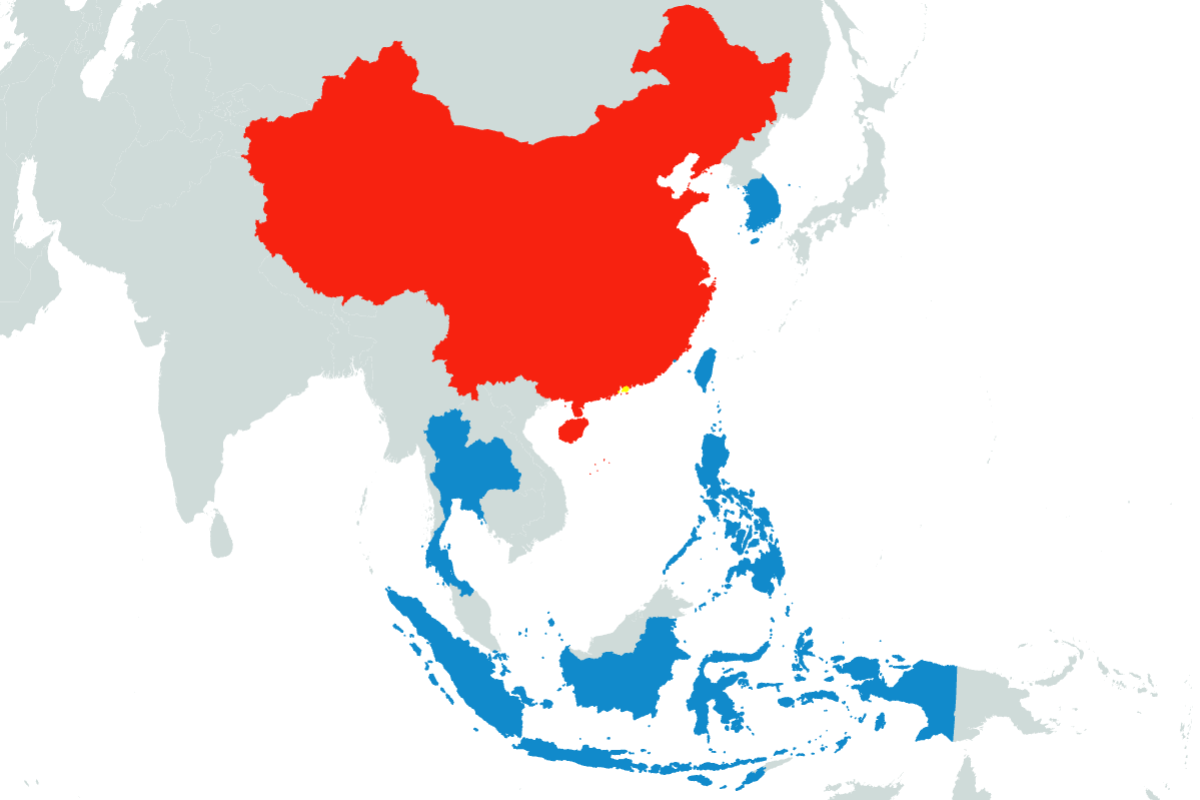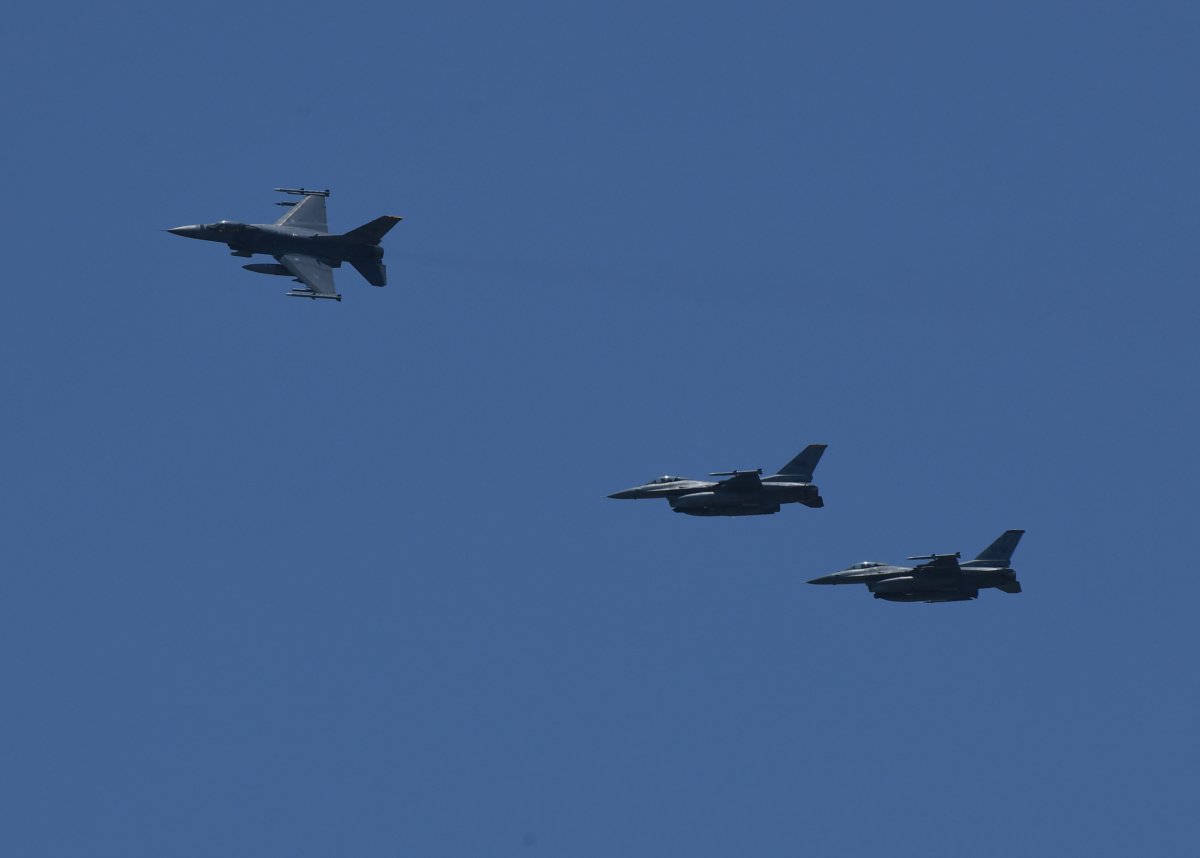
A Newsweek map shows at least six countries in the Western Pacific region are operating or have placed orders for F-16 fighter jets from the United States, including Taiwan and the Philippines, as they face threats posed by their powerful neighbor, China.
Washington stands strong with its Indo-Pacific allies and partners by taking “decisive actions” to counter threats, the U.S. State Department told Newsweek, while the Chinese Embassy in Washington, D.C., criticized the U.S. for instigating what it called “military confrontation.”
Why It Matters
The F-16, also known as the Fighting Falcon, is still in demand despite having first flown in 1974. A spokesperson for Lockheed Martin, the defense contractor that builds the jet, told Newsweek that over 3,100 F-16s operate in 28 countries, having logged around 19.5 million flight hours and over 13 million sorties.
The latest version of the F-16, the Block 70/72, is labeled by Lockheed Martin as the most advanced fourth-generation fighter. There are 114 of the aircraft on order for Bahrain, Slovakia, Bulgaria, Taiwan, Jordan and one undisclosed customer, the company spokesperson said.
What To Know
Taiwan, a self-ruled island that China has threatened to annexe, has the largest F-16 fleet in the Western Pacific region. It placed two orders for 150 and 66 fighter jets in 1992 and 2019, respectively, for a total of 216 aircraft to safeguard the island’s airspace.
Liu Pengyu, spokesperson for the Chinese Embassy in Washington, D.C., told Newsweek that U.S. arms sales to Taiwan are “dangerous moves” that undermine peace and stability in the Taiwan Strait, warning that China will take necessary measures to defend its sovereignty.
Communist China claims that Taiwan is part of its territory, despite never having governed it. The 1979 Taiwan Relations Act, a key piece of American legislation governing relations with Taiwan, requires that Washington provide Taipei with “defensive weapons.”
“The United States has and will continue to provide Taiwan defense articles and services to support Taiwan’s self-defense capabilities, commensurate with the threat Taiwan faces,” a spokesperson for the U.S. State Department said in response to a Newsweek emailed inquiry.
SAM YEH/AFP via Getty Images
The second largest F-16 user in the region is South Korea, a key U.S. treaty ally in Northeast Asia that faces repeated threats from nuclear-armed North Korea. It has ordered a total of 180 F-16s.
During a joint military exercise with the U.S. last month, a pair of South Korea’s KF-16s—the designation for F-16s assembled locally in the country—mistakenly released eight bombs short of their intended target, injuring civilians and soldiers, and damaging homes.
The F-16 is also used by three Southeast Asian countries—Indonesia, Singapore and Thailand—located around the disputed South China Sea, where China has territorial disputes with its neighbors and standoffs and clashes at sea frequently occur.
Singapore has a fleet of 62 F-16s according to F.16.net, while Thailand has bought 52 jets from the U.S., in addition to seven jets that were donated by Singapore. Indonesia has received a total of 36 jets from two orders, including 24 aircraft that were previously used by the U.S. Air Force.
The Philippines, which has signed a mutual defense treaty with Washington, is poised to become the next F-16 operator. The U.S. State Department has recently given the green light to Manila’s request to buy 20 fighter jets, as well as missiles, in a $5.6 billion package.

TED ALJIBE/AFP via Getty Images
Military and security cooperation between Washington and Manila should not target any third party or harm their interest, Liu stated in an email to Newsweek, warning against what the spokesperson called “fueling the flames” and “turning Asia into a powder keg.”
What People Are Saying
A spokesperson for the U.S. State Department said: “Our continued security assistance to Taiwan is to deter war and create space and confidence for the peaceful resolution of cross-Strait differences.”
Liu Pengyu, spokesperson for the Chinese Embassy in Washington, D.C., said: “The Taiwan question is at the core of China’s core interests, and the first red line that cannot be crossed in China-U.S. relations. To aid ‘Taiwan independence’ by arming Taiwan is just like playing with fire and will get the U.S. burned, and to use the Taiwan question to contain China is doomed to fail.”
A spokesperson for Lockheed Martin said: “The F-16 Block 70/72 is the latest production variant, featuring the APG-83 AESA radar and the Automatic Ground Collision Avoidance System (Auto GCAS), a safety feature designed to prevent controlled flight into terrain. Auto GCAS has been credited with 12 saves involving 13 pilots.”
What Happens Next
It remains to be seen whether countries in the Western Pacific region will purchase additional F-16s, but the Trump administration is pushing allies and partners around the world to boost their defense spending.
